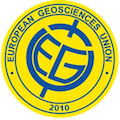 |
Active faulting induced by the slip partitioning in the Lesser Antilles arc
Frédérique Leclerc, Nathalie Feuillet, François Beauducel, Georges Boudon, Valentin Clément, Christine Deplus, Jean-Frédéric Lebrun, Anne Le Friant, Alexandre Nercessian, Jean-Marie Saurel
European Geosciences Union, General Assembly 2010, Vienna, Austria, 02-07 May 2010, poster.
|
Abstract.
AGUADOMAR marine cruise data acquired 11 years ago allowed us to identified and map two main sets of active faults within the Lesser Antilles arc (Feuillet et al., 2002; 2004). The faults belonging to the first set, such as Morne-Piton in Guadeloupe, bound up to 100km-long and 50km-wide arc-perpendicular graben or half graben that disrupt the fore-arc reef platforms. The faults of the second set form right-stepping en echelon arrays, accommodating left-lateral slip along the inner, volcanic islands. The two fault systems form a sinistral horsetail east of the tip of the left-lateral Puerto Rico fault zone that takes up the trench-parallel component of convergence between the North-American and Caribbean plates west of the Anegada passage. In other words, they together accommodate large-scale slip partitioning along the northeastern arc, consistent with recent GPS measurements (Lopez et al., 2006). These intraplate faults are responsible for a part of the shallow seismicity in the arc and have produce damaging historical earthquakes. Two magnitude 6.3 events occurred in the last 25 years along the inner en echelon faults, the last one on November 21 2004 in Les Saintes in the Guadeloupe archipelago.
To better constrain the seismic hazard related to the inner arc faults and image the ruptures and effects on the seafloor of Les Saintes 2004 earthquake, we acquired new marine data between 23 February and 25 March 2009 aboard the French R/V le Suroît during the GWADASEIS cruise. We present here the data (high-resolution 72 channel and very high-resolution chirp 3.5 khz seismic reflection profiles, EM300 multibeam bathymetry, Küerg coring and SAR imagery) and the first results. We identified, mapped and characterized in detail several normal to oblique fault systems between Martinique and Saba. They offset the seafloor by several hundred meters and crosscut all active volcanoes, among them Nevis Peak, Soufriere Hills, Soufriere de Guadeloupe and Montagne Pelée. Some faults, located between Guadeloupe and Montserrat have throws up to thousand meters. Between St Lucia and Martinique, the St Lucia channel is crosscut by several normal faults with scarps up to 100m-high. These faults extend onshore and cut the southern shore of Martinique. Given their length (~20 km), they could produce magnitude 6 or more earthquakes in the most tourist towns of the island (St Anne, St Lucie). Recent coseismic offsets could be identified along most faults in the chirp profiles. Turbidite deposits recognized in the Küllenberg cores could be related to damaging earthquakes. High resolution SAR imagery (25 cm) reveals several coseismic scarps in Les Saintes channel along the faults that ruptured in 2004.
Related papers: [Feuillet et al., 2010a; Feuillet et al., 2010b]
